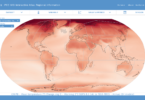The Great Highway, one of San Francisco’s iconic roads that runs along the city’s Pacific coastline, has been closed intermittently for the last several months due to sand intrusion and flooding from the relentless waves of storms visited upon California throughout this winter.
Now, when the City says “closed”, they mean closed to cars, as American roads by default have been prioritized in favor of motorized vehicles to such a degree that any other modes of transportation often aren’t even worth a special mention.
However, commuters and revelers unburdened by 4000 pound machinery are usually pretty good at interpreting car culture’s “sign” language. So on a recent visit the Great Highway had unsurprisingly been turned into the Great People Way.
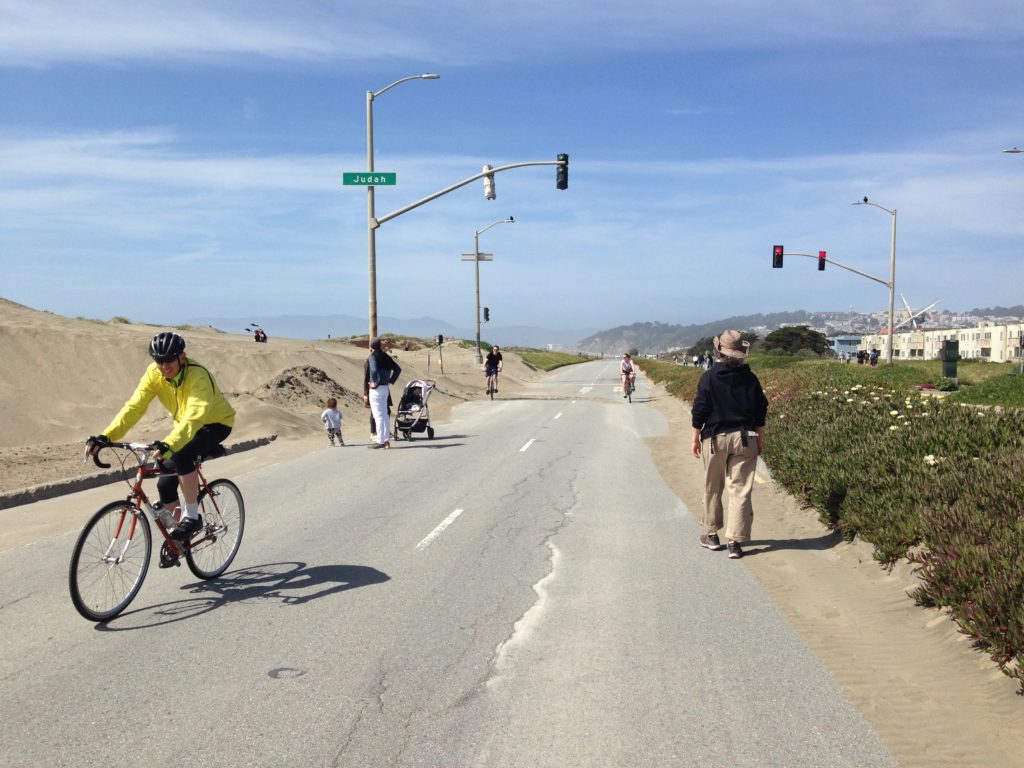
While this is not the first time this road has had problems because of particular storms, it’s hard to argue that the speed and intensity with which coastal erosion has been happening in recent years — like so many other changes in natural rhythms all over the world — is due to anything but the effects of climate change.
When they say sea levels are rising, it’s not an abstract term from an academic paper anymore, as my wife — and human measuring tape — demonstrated in an impromptu “scale of sand migration” analysis.
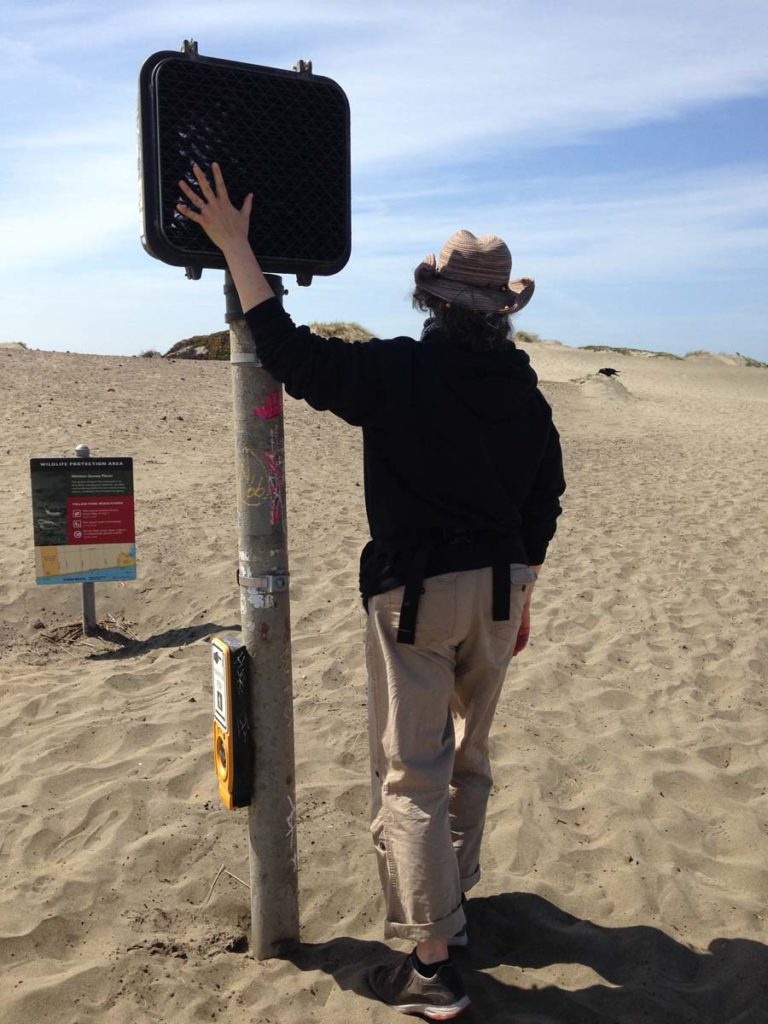
SF Supervisor Rafael Mandelman’s recently introduced climate change emergency declaration puts what we can all see with our own eyes into writing:
We are declaring emergency, because, simply put, there is no more time to waste. San Francisco, like the rest of California, is already suffering impacts of climate change in the form of droughts, air pollution, extreme heat, and lowland flooding. On our current path, projections show up to eight feet of sea level rise in the Bay over the next 100 years, but even at three feet, we know the Ferry Building would be flooding twice daily and the Embarcadero, Mission Bay and Marina will all be at risk. Already we are planning to permanently close two lanes of the Great Highway in response to rising tides.
The effects of climate change in many cases are dra- as well as traumatic. In California alone, people are losing their lives and homes in mega wildfires on a regular basis now, and the rising fluctuations and extremes in temperatures with its feedback loops of increased floods, droughts, heat/cold waves, and coastal erosion is expected to set off ever more crises, from public health to agriculture.
However, not all manifestations of the climate emergency result in dramatic footage from disaster areas. Imagery of any particular climate disruption process can run from punching us in the cerebral cortex…
…to signs of blissful adaptation.
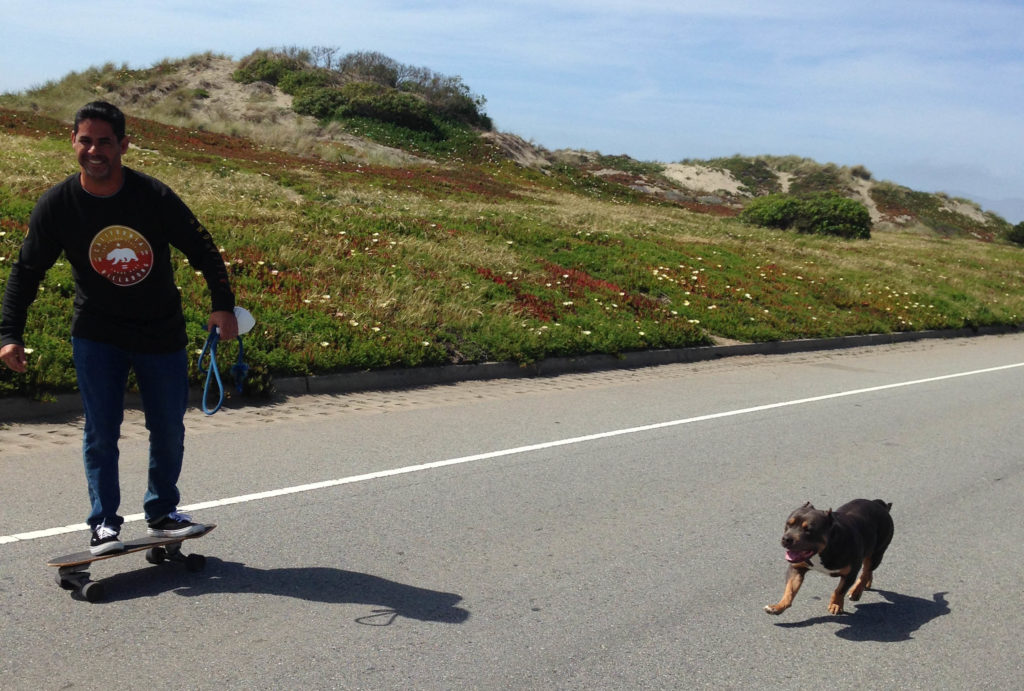
While it can be argued that people often don’t respond to crisis until their proverbial house is on fire, climate change presents one of those vexing paradoxes where the house is on fire but it’s on such a large spatial and temporal scale that our brains would rather dally about the premises looking for a smoke-free room than grab an extinguisher and call 911. In fact, according to George Marshall, author of Why our brains are wired to ignore climate change and what to do about it, climate-related trauma seems to make people even less likely to acknowledge, much less do something about the threat.
And this is where a less humanly tragic climate event such as the closure of the Great Highway might actually be a good catalyst for the kind of brain rewiring needed in the shift towards human living arrangements that are more in balance with the atmosphere’s CO2 budget. Rather than causing people to shut down completely to escape from the loss and suffering endured during a major disaster, these less extreme but eminently visible events afford us the chance to experience and reflect on climate change without the psychological trauma but close enough to be personally affected and moved to look at the menu of solutions.
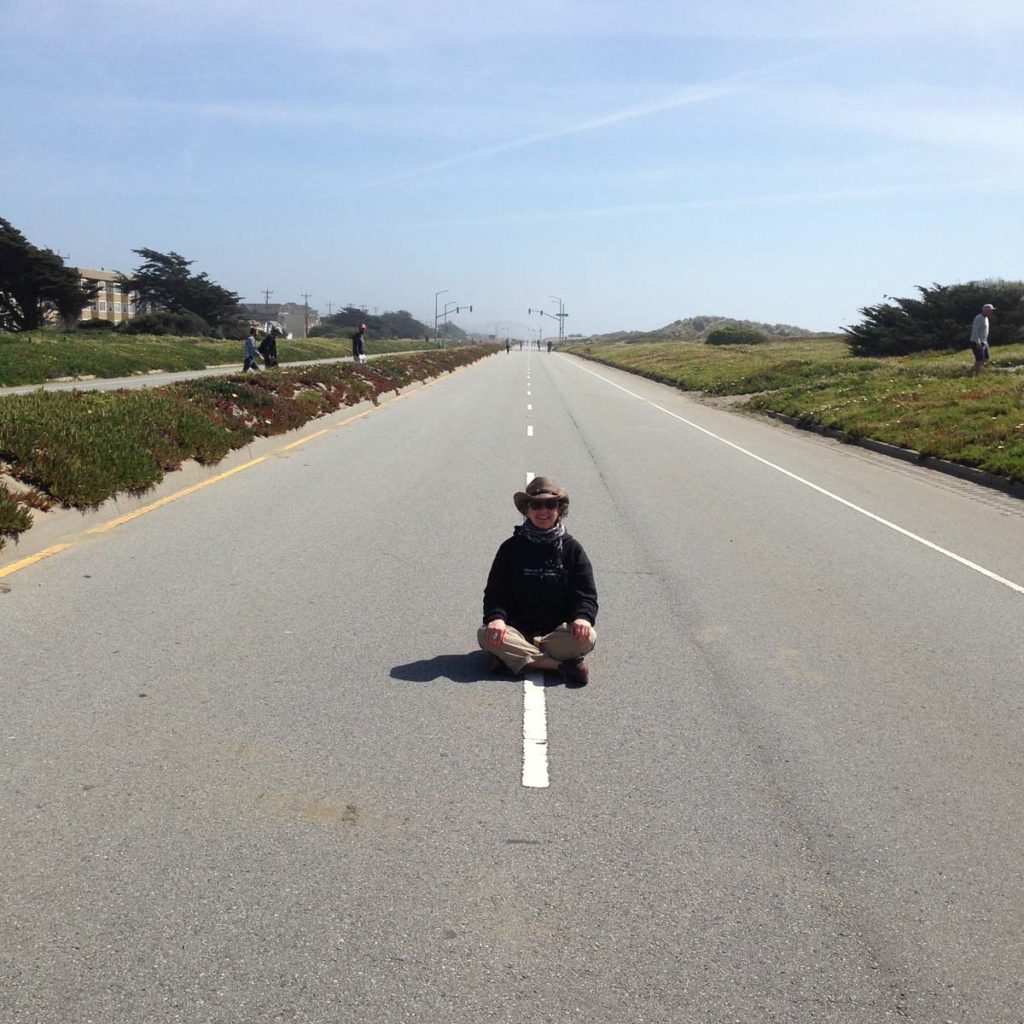
Especially in San Francisco, where we have managed to reduce overall greenhouse gas emissions by 30 percent since 1990 while during the same period the transportation sector’s share of those emissions has ballooned from 33 to 45 percent with over 70 percent of that number attributable to automobiles and trucks, all of us can benefit from such a well placed reminder by mother nature to rethink our mobility.
If nothing else, there’s a certain poetic logic to a road built for a mode of transit that is responsible for causing the conditions that are now making that same road inaccessible to said mode of transit… becoming available exclusively to the modes of transit that will improve said conditions.
Now if only our road signs could tell that story…
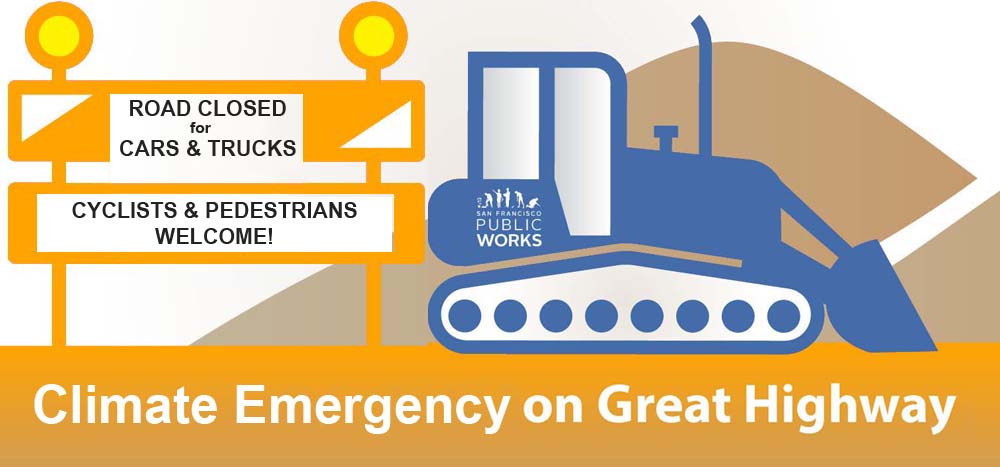
All non-twitter photos and photoshopped SF DPW sign by Sven Eberlein





